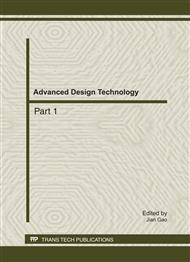p.1880
p.1885
p.1889
p.1893
p.1900
p.1910
p.1914
p.1918
p.1923
Simulating Sliding Efficiency of Belt Driving Acted on by Bi-Directional Alternating Load
Abstract:
With the belt driving device which is affected by bi-directional alternating load taken as research object and with the elastic slide between belt and pulley which is caused by elastic deformation of the belt considered, the calculating model of belt instantaneous sliding friction is established. The belt is simplified to elastic body of longitudinal vibration, the mechanical model of the belt longitudinal vibration which is excited by alternating friction is established, and the mathematical model of the wave equation form is established. The numerical simulation model of wave equation is carried out on using the superposition method of mode of vibration. The simulation models of the belt instantaneous sliding velocity and the belt instantaneous sliding efficiency are presented. The factors affecting sliding efficiency are pointed out, such as oscillation amplitude of alternating torque and initial tension of belt. The following conclusions are obtained by the simulating results: (1) load torque fluctuations will lead to lower sliding efficiency; (2) specifically, the sliding efficiency will decrease obviously in the area where the direction of load torque is occurring; (3) on condition that the belt doesn’t skid, the sliding efficiency of the belt reduces with the increase of initial tension, and the sliding efficiency will increase through optimizing the initial tension of belt.
Info:
Periodical:
Pages:
1900-1909
Citation:
Online since:
August 2011
Authors:
Price:
Сopyright:
© 2011 Trans Tech Publications Ltd. All Rights Reserved
Share:
Citation:


